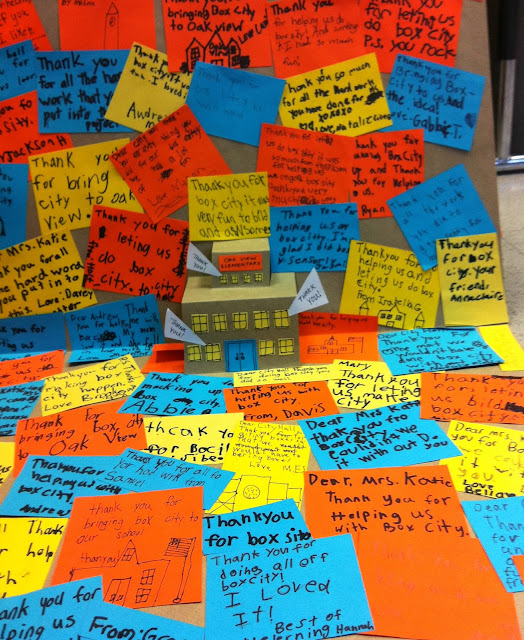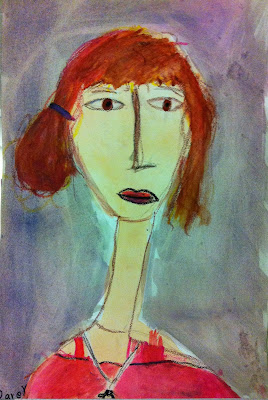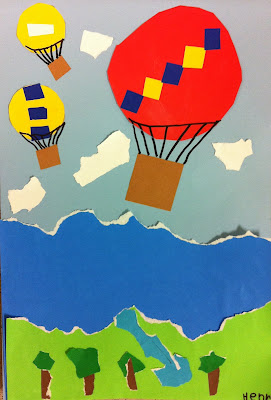
First graders created these adorable "colorpillars" for their color mixing lesson in October. It worked pretty well, but in the future I think I will do this lesson either later in the year with first grade or with second graders- the directions got a little overwhelming for some of them.
Here's how we made them:
1. Give students 1/6 of a packet of red, yellow, and blue model magic (a little larger than a grape) Give each student a small color wheel to organize their balls of color.
2. Break each ball of model magic into four pieces.
3. Roll three of these pieces into balls and place in the primary color position.
4. Mix primary colors and place on the color wheel.
5. Working around the color wheel step by step together, mix remaining pieces into the intermediate colors.
6. Take the balls off the color wheel and make a line.
7. Press the pieces together firmly and into bend into a caterpillar shape. Glue onto mat board.
8. Use a piece of Twistees for the antennae.
















































